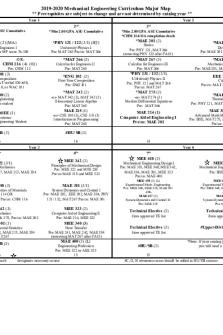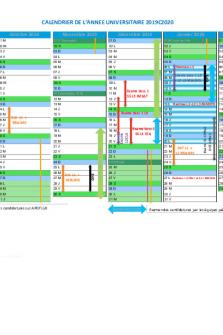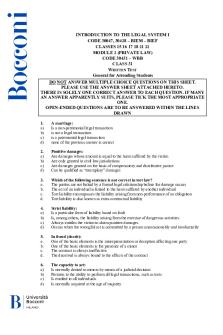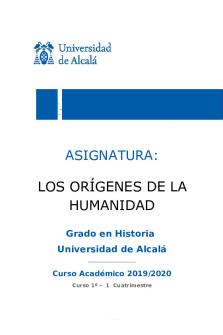Amboss antibiotika mosaik 2019 2020 PDF

| Title | Amboss antibiotika mosaik 2019 2020 |
|---|---|
| Author | Илья Брильков |
| Course | Biology |
| Institution | Запорізький національний університет |
| Pages | 1 |
| File Size | 227.7 KB |
| File Type | |
| Total Downloads | 82 |
| Total Views | 148 |
Summary
Download Amboss antibiotika mosaik 2019 2020 PDF
Description
ANTIBIOTIKA-MOSAIK (Fokus: Kalkulierte Therapie schwerer Infektionen) PENICILLINE
CEPHALOSPORINE
CARBAPENEME
MAKROLIDE
CHINOLONE
Stand 2019/2020
GLYCOPEPTIDE
SONSTIGE
Fosfomycin
Rifampicin
Colistin
Daptomycin
Linezolid
Tigecyclin
Metronidazol
Cotrimoxazol
Clindamycin
Doxycyclin
Gentamicin
Vancomycin
!
K
Teicoplanin
Clarithromycin
Azithromycin
Moxifloxacin
Levofloxacin
Ciprofloxacin
Ertapenem
Meropenem
!
Imipenem
Ceftarolin (5. Gen.)
Cefepim (4. Gen.)
Ceftazidim (3b. Gen.)
Ceftriaxon (3a .Gen.)
Cefuroxim (2. Gen.)
Piperacillin / Tazobactam
Ampicillin / Sulbactam
Ampicillin
Penicillin G
Flucloxacillin
K
GRAMPOSITIV
Streptococcus pneumoniae ?
Viridans-Streptokokken Staph. aureus (MSSA) Staph. aureus (MRSA) Koagulase-neg. Staphylokokken Enterococcus faecalis
S
Enterococcus faecium (ggf. VRE-Risiko)
S ?
Listeria monocytogenes
?
S
E. coli Enterobacter cloacae MRGN
a
?
Klebsiella spp. Proteus mirabilis
Potenziell
GRAMNEGATIV
Proteus vulgaris Citrobacter spp. ?
Morganella morganii Serratia spp.
?
Acinetobacter spp.
?
Pseudomonas aeruginosa MRGNc Stenotrophomonas maltophilia Salmonella spp.
?
Shigella spp.
?
N. gonorrhoeae (Gonokokken)
?
N. meningitidis (Meningokokken)
?
?
Haemophilus influenzae ANAEATYPIKER ROBIER
Moraxella catarrhalis Bacteroides spp. Clostridium difficile Chlamydophila pneumoniae Legionella spp. Mycoplasma pneumoniae
Basierend auf Literaturangaben v.a. aus dem deutschsprachigen Raum (RKI, PEG), ergänzt durch angepasste Empfehlungen des Sanford Guide. Regionale bzw. institutionelle Resistenzmuster müssen berücksichtigt werden!
V20180822
Gute Wirksamkeit Prinzipiell wirksam, jedoch fragliche klinische Effektivität bzw. Auftreten von Resistenzen mit variierender Häufigkeit
?
Wirksamkeit nicht ausreichend untersucht
K
Nur als Kombinationspartner einsetzen!
S
Synergistisch in Kombination mit zellwandaktiven Antibiotika
!
Einsatz dieser Wirkstoffe nur bei multiresistenten Erregern
Nephrotoxische Wirkung: Monitoring und Dosisanpassung nach GFR empfohlen! Antibiotika der Wahl in der Schwangerschaft und Stillzeit. Die meisten Erfahrungen bestehen für Penicilline > Cephalosporine > Makrolide. Alle anderen Wirkstoffe erfordern eine individuelle Nutzen-Risiko-Abwägung.
a
b c
Antibiotikum der Wahl bei jeweiligem Erreger
Potentiell multiresistente gramnegative Stäbchen (MRGN), welche gegen mind. 3 der wichtigsten Antibiotikaklassen (Acylaminopenicilline, Chinolone, Cephalosporine, Carbapeneme) resistent sind. Die Zeile MRGN illustriert den Maximalfall eines 4-MRGN. Risikofaktoren für MRGN sind nosokomiale Infektionen, lange (intensivstationäre) Klinikaufenthalte und eine Vortherapie mit Breitspektrumantibiotika. Prinzipiell wirksam, jedoch Induktion einer Resistenzentwicklung unter der Therapie möglich. Bei schweren Infektionen sind Carbapeneme und Chinolone vorzuziehen. Bei Nachweis eines 4-MRGN mit Klebsiella-pneumoniae-Carbapenemase (KPC) sind Ceftazidim/Avibactam (in DE als Zavicefta®) bzw. Meropenem/Vaborbactam (Zulassung bisher nur in den USA) weitere therapeutische Optionen.
www.amboss.com...
Similar Free PDFs

Antibiotika Tabelle
- 10 Pages

Nieren (Amboss)
- 5 Pages

ICJ Cases 2019-2020
- 7 Pages

2019-2020 Mechanical Engineering
- 2 Pages

Calendrier 2019-2020 Licence
- 3 Pages

Mock exam 2019-2020
- 8 Pages

KALDIK 2019-2020 JATENG
- 52 Pages

Cronología relativa 2019-2020
- 6 Pages

Samenvatting KST 2019-2020
- 17 Pages

2019-2020 HW1 answers
- 12 Pages

Simulazione Sample 2019-2020
- 7 Pages

Compilado Finales 2019-2020
- 61 Pages

Microeconomics exam 2019-2020
- 3 Pages

FLUID MECHANICS ( 2019-2020)
- 67 Pages
Popular Institutions
- Tinajero National High School - Annex
- Politeknik Caltex Riau
- Yokohama City University
- SGT University
- University of Al-Qadisiyah
- Divine Word College of Vigan
- Techniek College Rotterdam
- Universidade de Santiago
- Universiti Teknologi MARA Cawangan Johor Kampus Pasir Gudang
- Poltekkes Kemenkes Yogyakarta
- Baguio City National High School
- Colegio san marcos
- preparatoria uno
- Centro de Bachillerato Tecnológico Industrial y de Servicios No. 107
- Dalian Maritime University
- Quang Trung Secondary School
- Colegio Tecnológico en Informática
- Corporación Regional de Educación Superior
- Grupo CEDVA
- Dar Al Uloom University
- Centro de Estudios Preuniversitarios de la Universidad Nacional de Ingeniería
- 上智大学
- Aakash International School, Nuna Majara
- San Felipe Neri Catholic School
- Kang Chiao International School - New Taipei City
- Misamis Occidental National High School
- Institución Educativa Escuela Normal Juan Ladrilleros
- Kolehiyo ng Pantukan
- Batanes State College
- Instituto Continental
- Sekolah Menengah Kejuruan Kesehatan Kaltara (Tarakan)
- Colegio de La Inmaculada Concepcion - Cebu

